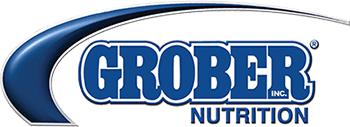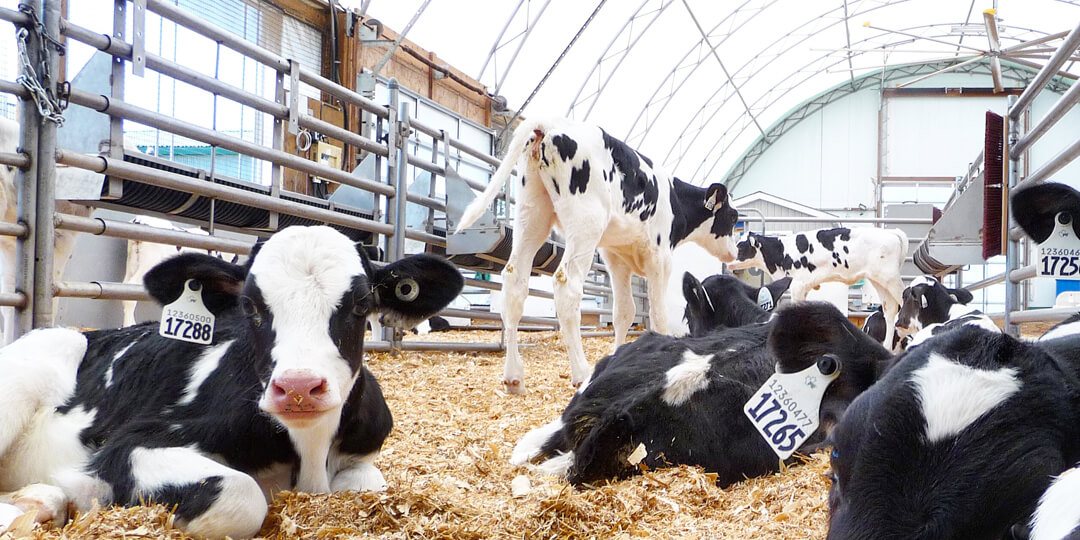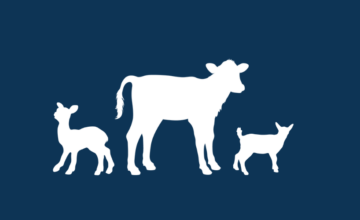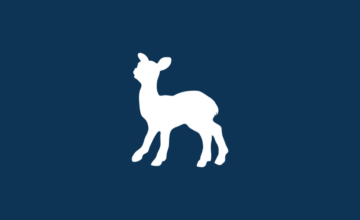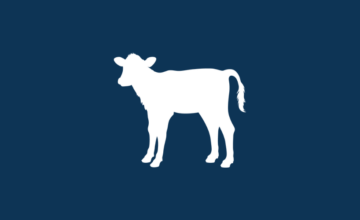Stockmanship for Calf & Heifer Management
- Mar 16, 2015
- By Grober Nutrition
- In Canada, USA
Group housing calves is becoming a more common way to house and manage calves. Part of managing a group of calves is being able to scan the herd effectively for individuals who need more attention. Monitoring the behavior of individuals and of the group by assessing the herds reaction to stimuli and being able to quietly sort out calves that need more attention is imperative in maintaining a heathy group of calves. Learning to move calves quietly and teaching them how to react slowly to human presence at this young age will not only make sorting out individual calves and moving the herd easier for those working with the calves, but will carry over into their heifer and production years where they must be more compliant to human handling.
Grober Nutrition has over 40 years of experience in raising calves in group housing systems, both at the Grober Young Animal Development Center on the grounds of Canada’s Outdoor Farm Show, as well as at their veal farms in Ontario, Quebec and New York State. The importance and application of good stockmanship beginning with calves has been made clear on our facilities. Grober attended a seminar by applied veterinary behaviorist, Dr. Don Höglund, MS DVM from North Carolina State University, College of Veterinary Medicine where he shared his knowledge of animal handling skills and emphasized their importance in the dairy industry. Dr. Höglund stressed the importance of efficient stockmanship with all farm cattle, but most importantly beginning with calves. He emphasized the learning patterns of cattle, and how the human handler can modify and control their behaviour calmly, quietly, efficiently, and safely by understanding how cattle learn. Dr. Höglund discussed how livestock interpret their environment through the use of their five senses; vision, hearing, touch, smell, and taste. Dr. Höglund explained that safety and efficiency are the main reasons for starting low-distress herd management with calves. Animals that are startled or experience pain during handling will likely experience greater distress during future handlings compared to animals with past experiences of being handled gently. Höglund shows that developing a history of low energy interactions with calves will save producers frustration, time, money and possibly injury with their herd. According to Dr. Höglund, the best time to work cattle is about 48-72 hours after they are brought into their new environment. Höglund suggests working calves when they are moved from hutches to a group pen or when a shipment of new heifers is re-grouped. Höglund says by setting aside 20 minutes of your day to work with these animals, you can develop a calm relationship with them that will carry over into their milking career.
Economic Perspective
Distress is a central component of poor welfare, which has increasingly become a major focus in animal agriculture. Höglund pointed out the benefits of improved welfare and animal production, achieved with low energy handling of livestock, as well as a more enjoyable experience for the herdsman. Each heifer born into the dairy herd guarantees a two year investment before she generates any income. Höglund referred to this two year period as a “training period” for the heifer before she enters the herd as a cow. He explained that as the heifer is exposed to the novelty of the parlor and intensive human interactions once part of the milking herd, she may be startled or caused pain as the handler tries to herd her into the parlor and interact with her. Dr. Höglund said that pain, surprise and ultimately adrenalin induced within 20 minutes of entering the parlor will cause around 10lb of milk to be withheld in the udder over the next few trips to the parlor and that 10 lbs will likely displace what would have been a new 10 lbs. Return on Investment decreases for that series in the milking cycle. This is also a situation where the handler and animal may be in danger of physical harm. Training the calf to accept human presence and action calmly when young will often translate into calm fresh-heifers later in life. This can make the first few entries into the parlor less distressful for the fresh-heifer and the worker. Calm heifers and cows will likely release all their milk production, each trip to the parlor. Dr. Höglund reminded us that “calm people tend to have calm cattle”.
Speak bovine
“It is currently impossible to know what an animal is feeling or thinking by merely observing animal behaviour.” Höglund suggested, “The only thing we can actually know is what they are doing.” This is where understanding what stimuli caused what specific reactions comes in. Observing animal behavior is central to efficient stock handling. If handling is efficient, then it is effective. Cattle have evolved as flight (escape) animals and this is complemented with a vast auditory and visual range. Höglund instructed the audiences to understand that, “sight and hearing are the most important senses cattle use when assessing their near-distant environment.” How you stimulate these facets of perception will be mirrored in the animals’ reaction. “Cows over-react to being over-stimulated.” Höglund says, “Cattle have the natural instinct to escape or to fight (aggression). When any stimulus is too intense, nature takes over which opens the opportunity for injury.” “Cattle tend to look at what stimulates them.” Höglund says. Standing directly behind the heifer puts you in her, so-called, blind spot. Moving quickly in and out of the blind spot can cause handlers to surprise cattle. Standing slightly to the side permits cattle to use their superb peripheral vision to see you. In this manner, cattle can keep their head pointed toward their destination allowing them to look where they are moving while simultaneously watching the handler. Working cattle from the side will also help handlers avoid startling cattle. Cattles’ auditory range is broad and very sensitive compared to humans and most other livestock. This is one reason why Höglund discourages shouting or whistling loudly, especially when working young, easily excited heifers. “The sound made from a shout or loud whistle can be a stressor, over-stimulating the ear drum which can cause pain.” That contributes to high distress human and animal handling interactions. Pace is important when moving cattle. When handling a group of calves, they will run and jump the first few times when moved around the pen. Though can be a sign that the animals are healthy, the objective is to teach the calves to walk when herded. After they run across the pen a few times, they will slow to a walk and be less reactive to the handler. Once the calf slows to a walk, Höglund explained, “the handler should slow their pace or stop until there is some distance between them and the animal. Then the handler applies only enough stimulus to perpetuate the walking movement. When cattle run everywhere they are herded, injury can happen to man and animal. Walking is best when herding animals, especially in and around the milking parlor.” Efficient herd management suggests that handlers keep cattle moving continuously toward their destination. Höglund says that “walking opposite and parallel to the flow of cattle will promote forward movement of cattle.” Höglund also tells audiences that, “by walking opposite the cows, they will go the direction they are facing, moving away from human presence, especially the human face and eyes.” This technique is efficient, low energy handling. In some cases, humans can move cattle from the other side of a fence or gate. That is a great way to move timid heifers into new environments. “Each time cattle are worked efficiently they learn from it and become easier to work the next time. That is to say, animals learn calm handling if handled calmly.” Höglund states. Working calves that are group housed or in weaning pens builds familiarity of the animals with humans. It teaches calves to move calmly from place to place on the farm. This creates calves that are more familiar with human actions and that can result in better milk production due to a more enjoyable and less dangerous relationship. The ultimate way to incorporate good stock handling into a barn is through good management and training of employees in efficient handling education and training. Dr. Don Höglund is renowned in the field of animal behaviour and travels globally conducting on farm training seminars. By learning how to efficiently direct the difficult calf or heifer in a controlled manner, the practicality of having efficient stockmanship will be evident and long lasting, as will the improvements in economy and safety. To learn more on stock handling and to schedule a training session at your farm, contact Dr. Don Höglund through his website, www.dairystockmanship.com, Consider how your herd could benefit from improved stockmanship skills and how this behavior modification practice can be incorporated into the calf stage of management. There will always be a calf that needs individual attention within the group whether it be for vaccination, individual treatment, or starting new calves on automatic feeders. Starting calves on automatic feeders often requires individuals to be sorted from the group, directed towards the feeding station and held there until the calf is suckling from the feeder. This experience must be done with as little distress to the calf as possible, as the calf will be deterred from the feeding station and from suckling if they experience pain or surprise when being driven towards the feeder or held in the feeding station. Teaching your calves how to react to your presence in a calm manner, will not only help with calf management and start-up with group housing and feeding systems, but will carry into that animals’ future in your herd.
(This article is based on a seminar presented by North Carolina State University, College of Veterinary Medicine, Associate Professor, Dr. Don Höglund, at the Grey Bruce Farmers Week in Ontario, Canada in 2014.)
Grober Nutrition
Recent Posts
Tags
Archives
- October 2024
- July 2024
- May 2024
- April 2024
- January 2024
- December 2023
- October 2023
- September 2023
- August 2023
- June 2023
- December 2022
- November 2022
- October 2022
- August 2022
- July 2022
- June 2022
- May 2022
- April 2022
- March 2022
- February 2022
- January 2022
- August 2021
- February 2021
- September 2020
- June 2020
- April 2020
- May 2017
- April 2017
- October 2016
- September 2016
- August 2016
- March 2016
- March 2015
- January 2015
- December 2014
- December 2013
- September 2013
- May 2013
- January 2013
- December 2012
- November 2012
- March 2012
- March 2011
- February 2011
- November 2010
- August 2010
- December 2009
- November 2009
- March 2009

